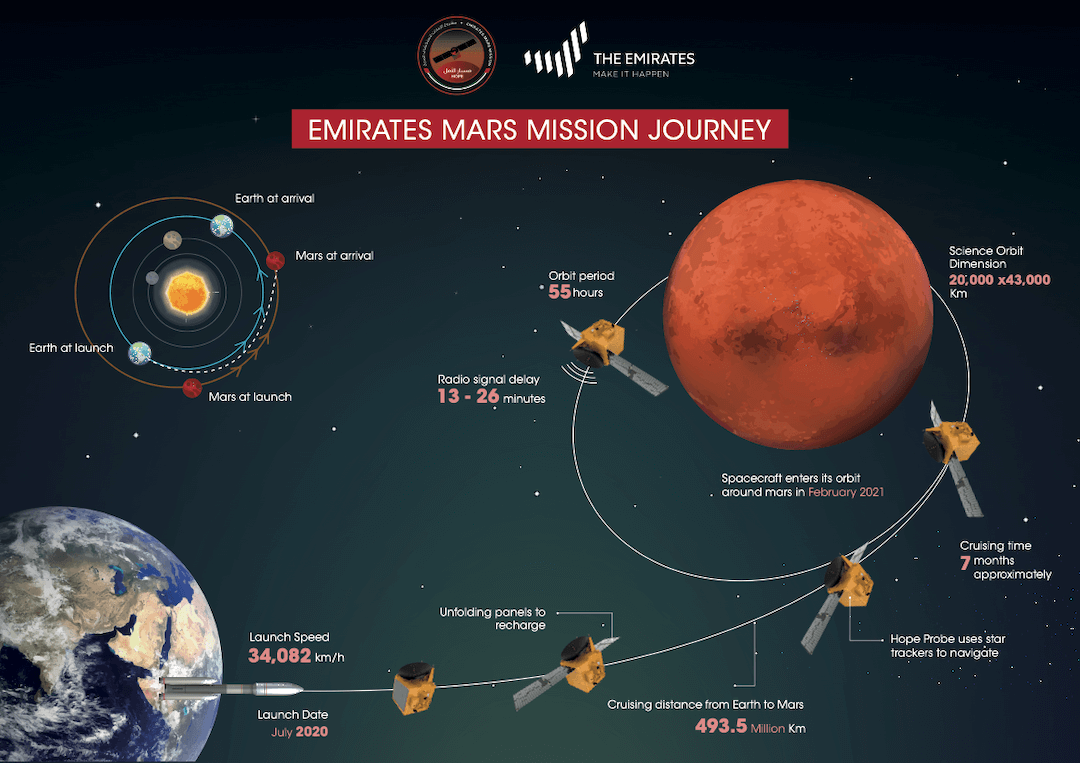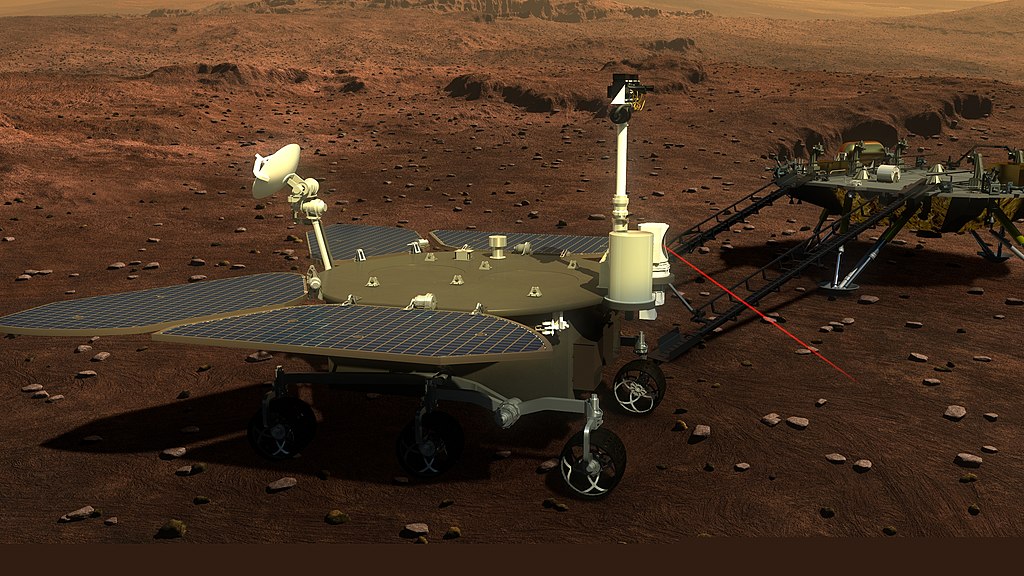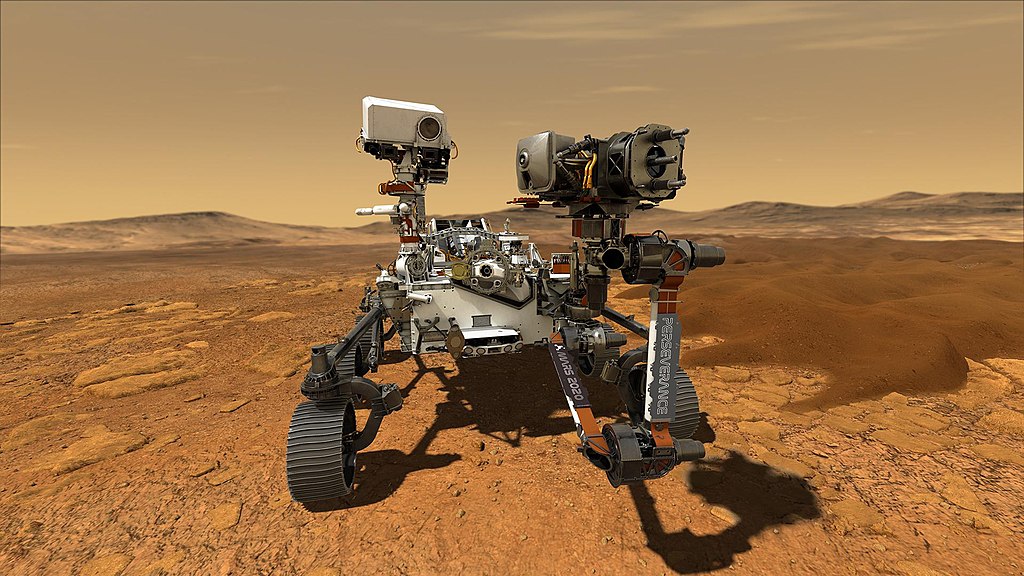Two spacecraft from Earth reached Mars this week – one from the United Arab Emirates (UAE), and the other from China. The missions, which launched last July, take on big, new challenges for their countries. A US spacecraft should arrive on February 18.
UAE’s Hope
The UAE launched its Mars probe, named “Hope”, on July 19. It was a huge success for the country, which only started its Mars program six years ago. Now, the UAE is the first Arab country to send a mission to Mars.

(Source: Emirates Mars Mission.)
The Hope arrived near Mars on Tuesday, slowing its speed so that the gravity of Mars could pull the spacecraft in. The probe will spend the next two years orbiting the red planet. The UAE expects Hope to be the first mission to provide details about Mars’s atmosphere through all Martian seasons.
The UAE is only the fifth country to succeed in sending a probe to Mars. The science team behind the Hope is 80% women. The country hopes that the mission will inspire its citizens to make greater progress in science.
To celebrate, many of the UAE’s important buildings have been lit up in the last week.
😕
This image has not been loaded because of your cookie choices. To view the content, you can accept 'Non-necessary' cookies.
The UAE hopes that its Mars mission will inspire its citizens to make greater progress in science. To celebrate, many of the UAE’s important buildings have been lit up in the last week.
China’s Tianwen-1
On Wednesday, China’s Tianwen-1 reached Mars and began orbiting the planet. Though China has had several successes in space recently, this is the first time it has succeeded in sending a mission to Mars.
Unlike the UAE mission, the Tianwen-1 won’t simply orbit Mars. Instead, after orbiting for a few months, the Tianwen-1 will attempt to send a rover to the surface of the planet. The Tianwen-1’s rover is roughly the size of a golf cart and is solar-powered.
On Wednesday, China’s Tianwen-1 reached Mars and began orbiting the planet. Though China has had several successes in space recently, this is the first time it has succeeded in sending a mission to Mars. The post below is from a Chinese newspaper.
😕
This tweet has not been loaded because of your cookie choices. To view the content, you can accept 'Non-necessary' cookies.
Landing on Mars is something many countries have tried and failed at. Only the US has managed to land several times. And even the US has had one landing mission fail.
China plans to send the rover to the Martian surface in May or June. China’s space agency has chosen a wide open area called Utopia Planitia for landing the rover. This is the same area where NASA landed its Viking 2 lander in 1976.

(Source: China National Space Administration [CC BY-SA 4.0], via Wikimedia Commons.)
If the Tianwen-1 rover lands successfully, it is expected to be looking for water underground, as well as for any signs of life from long ago.
NASA’s Perseverance
On February 18, NASA is planning to land a new rover, named Perseverance, on Mars. If the landing goes well, Perseverance will be hunting for samples of Mars rocks that are worth bringing back to Earth to study. A future trip to Mars will be needed to bring the samples back.

(Source: NASA/JPL-Caltech [Public domain], via Wikimedia Commons.)
Did You Know…?
All three of these missions to Mars launched last July because that was when the two planets were lined up in a way that made the trip easier and faster.
(Front page image sources: Mars: NASA, Hope: Emirates Mars Mission, Tianwen-1: China Mars Exploration.)
